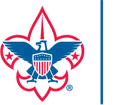Fire Building
Fire Building: Mastering the Art of Campfires
Fire building is an essential skill in Scouting, providing warmth, light, and a means for cooking in the outdoors. Whether you’re setting up camp or practicing survival skills, knowing how to safely build and maintain a fire is key to any outdoor adventure. Learning the fundamentals of fire building teaches responsibility, problem-solving, and environmental stewardship.
Fire Safety
Before lighting any fire, it’s critical to understand fire safety rules. Always use established fire rings or fire pits, clear the area of debris, and keep water or a shovel nearby to extinguish the fire. Never leave a fire unattended, and always fully extinguish it before leaving the site. Proper fire safety protects you, others, and the environment from harm.
_Suggested Pictures:
- A Scout clearing the ground around a fire pit
- A bucket of water and a shovel next to a small campfire_
Youtube Video: “Fire Safety for Scouts: How to Build and Extinguish a Campfire”
Gathering Materials: Tinder, Kindling, and Fuel
A successful fire starts with gathering the right materials. You’ll need three types: tinder (small, easily flammable materials like dry leaves, pine needles, or small twigs), kindling (slightly larger sticks or branches that help the fire grow), and fuel (large logs that keep the fire burning). Make sure your materials are dry, as wet wood won’t ignite easily.
_Suggested Pictures:
- A pile of tinder, kindling, and fuel neatly arranged
- A Scout gathering dry twigs and sticks in the woods_
Youtube Video: “How to Gather the Right Materials for Fire Building”
Fire Layouts: Teepee, Log Cabin, and Lean-To
There are several fire layouts that serve different purposes. The teepee is a classic design, with small tinder and kindling arranged in a cone shape, allowing air to flow through and ignite the fire. The log cabin layout provides a sturdy fire, great for long-lasting warmth and cooking. For windy conditions, the lean-to shelter fire works best by shielding the flame from strong gusts.
_Suggested Pictures:
- A step-by-step illustration of a teepee fire being built
- A Scout constructing a log cabin fire layout_
Youtube Video: “3 Fire Layouts Every Scout Should Know”
Igniting the Fire
Once your fire is properly laid, it’s time to light it. Matches or a lighter are commonly used, but Scouts are also encouraged to practice more primitive methods, like using a flint and steel or even friction-based techniques like a bow drill. Always start by lighting the tinder first, gently blowing on the fire to provide oxygen and help it grow.
_Suggested Pictures:
- A Scout striking a match to ignite a fire
- A close-up of a Scout using a flint and steel_
Youtube Video: “How to Light a Campfire: Tips and Techniques”
Maintaining the Fire
A well-built fire needs to be maintained to keep burning efficiently. Regularly add fuel, but avoid piling on too much wood at once, which can smother the flames. Pay attention to airflow—fires need oxygen to keep burning. If the fire starts to die down, carefully rearrange the logs or blow on the embers to stoke it back to life.
_Suggested Pictures:
- A Scout adding logs to a fire to keep it burning
- A Scout using a stick to rearrange the fire for better airflow_
Youtube Video: “How to Keep Your Campfire Burning”
Cooking Over a Campfire
One of the joys of building a campfire is using it to cook meals. Whether you’re roasting marshmallows, grilling over a fire grate, or preparing a meal in a Dutch oven, cooking over an open flame adds a delicious, rustic flavor. Always be careful to control the fire’s intensity when cooking, and use long-handled tools to avoid burns.
_Suggested Pictures:
- Scouts roasting marshmallows over a fire
- A Dutch oven simmering over a bed of hot coals_
Youtube Video: “How to Cook Over a Campfire for Beginners”
Extinguishing the Fire
Once you’re done with your campfire, it’s important to put it out safely. Let the fire burn down to ash, then pour water over the embers while stirring with a stick. Continue adding water and stirring until everything is cool to the touch. Never leave a fire smoldering—hot embers can reignite and cause a forest fire.
_Suggested Pictures:
- A Scout pouring water over a dying fire
- A fully extinguished fire pit with no visible embers_
Youtube Video: “How to Safely Extinguish a Campfire”
Leave No Trace: Fire Practices
Scouts follow the Leave No Trace principles when building and extinguishing fires. This means using established fire rings, minimizing your fire’s impact on the environment, and cleaning up the site thoroughly. When fires aren’t allowed or are unsafe due to dry conditions, Scouts can use alternative methods like portable camp stoves.
_Suggested Pictures:
- A Scout cleaning up a fire pit after extinguishing the fire
- A campfire setup that follows Leave No Trace guidelines_
Youtube Video: “Leave No Trace Fire Building Guidelines”
Fire building is a core skill in Scouting that teaches responsibility and outdoor living. Whether you’re gathering around a campfire for warmth or using it to cook your dinner, knowing how to safely build, maintain, and extinguish a fire is a skill every Scout should master. Check out the videos and practice these techniques to become a fire-building pro!


